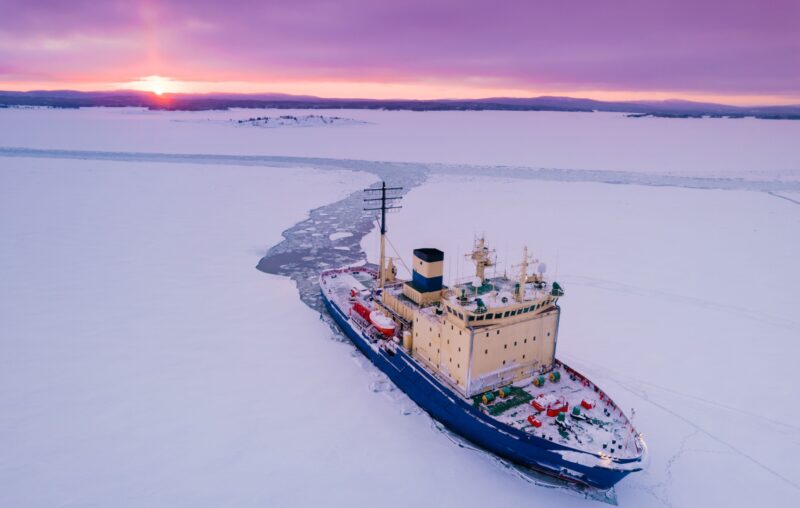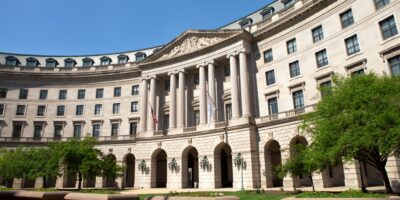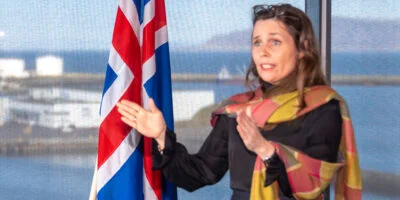Should We Panic Over Excessively Low Global Temperatures?

In the 5th edition (2020) of his remarkable book Free Trade Under Fire, Dartmouth economist Douglas Irwin summarizes one of the findings of a 2018 paper, published in the Economic Journal, by Eddy Bekkers, Joseph Francois, and Hugo Rojas-Romagosa:
Yet new shipping routes between East Asia and Western Europe have opened because of the melting Arctic ice caps, a by-product of global warming. Ships traveling from Yokohama in Japan to Rotterdam in the Netherlands used to traverse 20,900 kilometers, going down the South China Sea, across the Indian Ocean, and then up to Europe through the Suez Canal. By traveling across the North Pole, this distance will be cut by 13,700 kilometers. The reduction in distance is expected to increase trade flows between the two regions by 10 percent.
Although protectionists remain in denial, increased trade flows promote economic growth in the trading countries and enrich the peoples there. And greater prosperity brings not only greater access to goods and services but also lives that are healthier and longer. It follows that by lowering the cost of trade, global warming improves people’s lives.
Global warming contributes also in an even more-direct manner to human betterment. The reason is that cold weather kills about ten times the number of people who are killed by hot weather, so warmer weather reduces the killer cold to which people are exposed. The benefits to humanity of raising global temperatures are impossible to deny.
Unfortunately, though, the emitting of globe-warming carbon is (as economists call it) a “positive externality.”
For reasons given above, carbon emissions which warm the globe are obviously positive; they promote the improvement of material well-being and even save lives. Yet they are also an externality; carbon emitters, receiving no compensation for their contributions to global warming, have inadequate incentives to emit carbon. Because the social value of the benefits of these emissions is not ‘internalized’ on carbon emitters, when you drive your automobile you take no account of the beneficial effects on ice-cap melting of your driving, so you drive too little. Ditto for your neighbor who operates a factory; being unpaid for the contribution that her carbon emissions make to global warming, she emits less carbon than she would if she were paid for this contribution. An unfortunate result of the fact that the benefits of emitting carbon aren’t fully ‘internalized’ on motorists and factory owners is that too little carbon is emitted. Fortunately, an easy textbook solution is available to motivate individuals and firms to emit more carbon. That solution, of course, is government intervention.
Government could simply command motorists and factory owners to emit more carbon. But the sophisticated and much-preferred economic solution is instead for the government to subsidize carbon emissions. Government need only determine the socially optimal amount by which carbon emissions should be increased and then dispense subsidies in the amounts required to bring about these higher emissions. Problem solved. It’s right there in economics textbooks – in easy-to-grasp graphical form in ECON 101 texts and in pages of difficult and dense equations in ECON 999 texts.
Armed with my knowledge of economics – as a reminder, I boast a PhD in the subject – I’ll write to members of Congress, as well as to top executives at the EPA, to alert them to the need to correct the market’s failure to generate an optimally large amount of greenhouse-gas emissions. And in the name of the public good I urge you to do the same. Of course, government officials have conflicting political agendas to pursue and electoral constraints to consider, all of which will likely prevent these officials’ from increasing emissions of carbon all the way to their optimal levels. But every little bit helps. If we can raise carbon emissions just a bit more than they would otherwise be raised, we will have done good service to humanity by helping to reduce the effects of an obvious market failure.
Of Course I’m Joking
Despite the fact that the melting of Arctic ice caps resulted in the undeniably beneficial opening of shorter, faster trade routes – and despite the fact that cold weather is more lethal than hot weather – I don’t really want to encourage the government to subsidize carbon emissions. For starters, I worry that government officials would abuse the power to subsidize. But a far larger concern is that there is, in fact, no way to know if the benefits of a government-engineered increase in carbon emissions would be worth the costs.
While the evidence mentioned above about the benefits of higher global temperatures is genuine and significant, such evidence isn’t sufficient to carry the day in favor of government subsidization of carbon subsidies. After all, the consequences of successfully arranging for an increase in global temperatures, contrary to what you might infer from ‘the science’ as it appears in textbooks and academic papers, wouldn’t all be positive. Some consequences – and perhaps many – would be negative. So prudence demands that we ask: What might these negative consequences be, and how do they compare to the positive ones? If our obsession with increasing carbon emissions were to cause, say, the melting of another 60,000 square miles of Arctic ice, might the very real benefit that we predict, notice, and celebrate – namely, the further enlargement of ocean shipping lanes – be outweighed by some unpredicted and unnoticed cost elsewhere on earth? Possibly so. This possibility is enough to counsel against leaping too quickly from our textbook learning to the conclusion that the government should subsidize carbon emissions.
Economic Complexity is Vast
The chief problem isn’t the complexity of the natural environment. The chief problem is the complexity of the global economy – a complexity that’s magnitudes greater than that of the natural environment. We simply have no way to trace out more than a minuscule fraction of the economic consequences, positive and negative, of government efforts to alter a phenomenon as massive as the earth’s environment. To subsidize carbon emissions requires resources. From where will these resources come? The global-economy’s complexity makes it practically impossible to answer this question in detail. This lack of knowledge implies that we can’t be certain that whatever benefits arise from our engineered increase in global temperatures will exceed the costs created by the taxation necessary to secure the funds used as subsidies.
Nor can we know how people would respond to the natural environment left unengineered by the government. It’s true that the excessively cool global temperatures that prevail without government action will prevent the optimal amount of polar ice melt, as well as bring about other unfortunate consequences such as greater risks to citrus crops. But individuals are creative. They will, in the future, entrepreneurially discover and implement ways to reduce the costs of these too-cool temperatures. We have no way to know if taking action today to warm the earth with carbon subsidies would cost more or cost less than simply relying on people in the future to deal with the consequences of suboptimal global temperatures.
Finally, many governments already effectively subsidize carbon emissions. The building of vast networks of open-access roadways encourages driving and, hence, carbon emissions. Also, the US government’s now-routine practice of releasing petroleum from the Strategic Petroleum Reserve to moderate spikes in the price of gasoline also encourages more carbon emissions. Maybe, just maybe, the government already subsidizes carbon emissions optimally – and perhaps even super-optimally.
The bottom line is clear: As obvious as it seems from our understanding of economics that humanity currently emits too little carbon into the atmosphere, we can’t really be certain on this count. More significantly, because we cannot begin to understand the full economic consequences of greater subsidization of carbon emissions, the wisest course is for governments to do nothing and to rely upon individuals on the spot, using their own unique knowledge and creativity, to deal with the consequences of too-cool temperatures.










